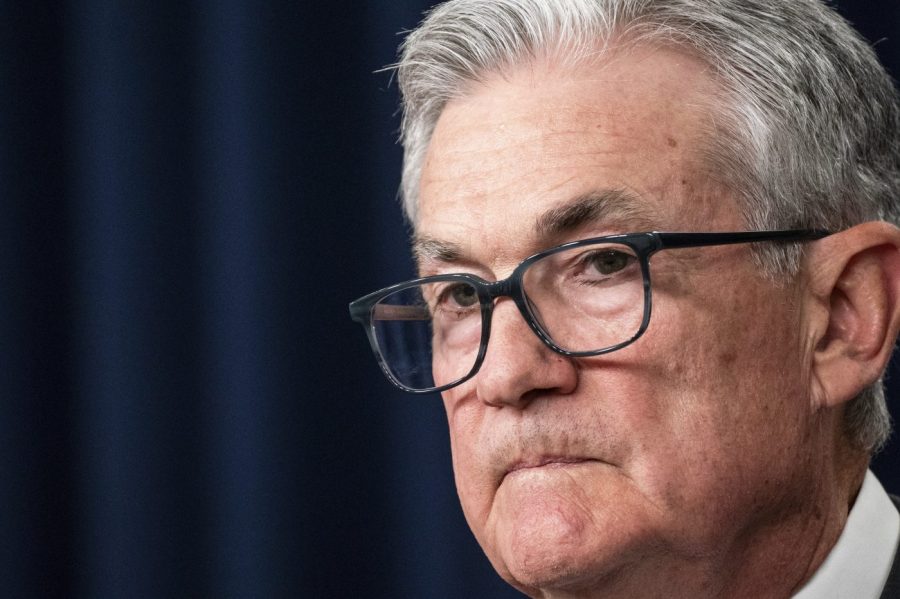The consumer price index (CPI) inched upward in December following a surprisingly strong jobs report for the month, potentially pushing back an expected March cut in interest rates by the Federal Reserve.
The CPI advanced 0.3 percent on the month, the Labor Department reported Thursday, up from 0.1 percent in November and no increase in October. Annually, the index advanced to a 3.4-percent increase from 3.1 percent in November, but still below recent highs around 3.7 percent reached in September and October.
“This uptick in CPI is a critical reminder of the unpredictable nature of economic recovery and the murkiness of the macro-economic data,” Global X asset manager Jon Maier said in an analysis.
“It suggests that investors might need to temper their expectations and remain vigilant.”
Thursday’s CPI numbers also come in the wake of a surprisingly strong December jobs report.
The economy added 216,000 jobs in December and the unemployment rate held firm at 3.7 percent, the Labor Department said last week.
The hotter-than-expected inflation and jobs reports still keep the U.S. on track to see price growth fall without a recession — a feat known as a soft landing — despite earlier fears.
Even so, the data could push back the Fed’s plans to reduce interest rates and is dampening expectations on Wall Street of a March cut. Financial markets give the Fed a 69 percent chance of cutting rates at least once in March and are almost certain to see rates hold steady in January, according to the CME FedWatch tool.
Despite the monthly acceleration, headline inflation has fallen precipitously from its pandemic peak of a 9-percent annual increase in June 2022.
“Core” inflation — which excludes the more volatile categories of energy and food and is given greater attention by the Fed — was flat on the month and slowed to 3.9-percent annual increase from 4 percent in November.
Housing costs still nearly double the overall rate of inflation
Housing, a sector of the economy that’s particularly responsive to Federal Reserve interest rate hikes, is still trailing the decreases in headline inflation.
Housing costs remain the main driver of inflation at a 6.2-percent annual increase for December. Car insurance prices are also way above average at a 20.3 percent annual increase.
“Shelter and motor vehicle insurance continue to be the persistent trouble spots, extending the streak of outsized monthly increases,” Greg McBride, an analyst with Bankrate, wrote in a Thursday analysis.
“Shelter remains the largest contributor, responsible for more than half of this month’s increase in the headline CPI and more than two-thirds of the increase in core CPI over the past year,” he said.
Despite the level of inflation in housing, prices are still heading downward. They fell in December to a 6.2-percent annual increase from 6.5 percent in November, and they’re down from their peak of 8.2 percent in March of last year.
“Housing is the last mile on inflation and the only way to fight it is by increasing our housing supply. Instead, the Fed’s high interest rates are making this crisis worse by forcing potential buyers back into the rental market and tanking the construction of new housing,” Lindsay Owens, a director of the economic policy advocacy organization Ground Collaborative, said in a statement.
“A higher-for-longer interest rate environment is exactly the wrong approach to bringing down housing costs. Shelter inflation should give the Fed even more incentive to cut rates,” she wrote.
Austin Schaul, head of research with investment company Avantax, wrote that yields on government bonds could increase with the expectation of fewer cuts this year. That could boost mortgage rates, even as the Fed plans cuts eventually.
“There’s reason to believe the shelter component of inflation should start to weaken, but in the absence of an economic slump or substantial disinflation during the coming months, we may see Treasury yields continue to drift higher as markets curtail their expectations for the easing of monetary policy,” he wrote.
Energy costs are down across the board
Changes in energy costs measured annually were in negative territory for December in every category except electricity.
Gasoline was down 1.9 percent, household gas was down 13.8 percent, and energy as a whole deflated 2 percent.
The average price of a gallon of gasoline nationally reached $3.07, down from $3.26 a year ago and far below the post-pandemic highs around $5 a gallon, according to the automotive company AAA.
Food prices are lower, but still rising
Food inflation in December was lower than headline inflation at a 2.7-percent annual increase.
Fresh fruit and vegetables have deflated 0.5 percent on the year while fresh seafood deflated 2.5 percent. Eggs were 23.8 percent cheaper than they were in December 2022.
But food price hikes remain a risk for consumers.
“The last few years of commodity price volatility have coincided with a period of record profit growth by global energy and food traders. In the area of food trading, the four companies that conservatively account for about 70 per cent of the global food market share registered a dramatic rise in profits during 2021 – 2022,” U.N. economists wrote in an October report.
